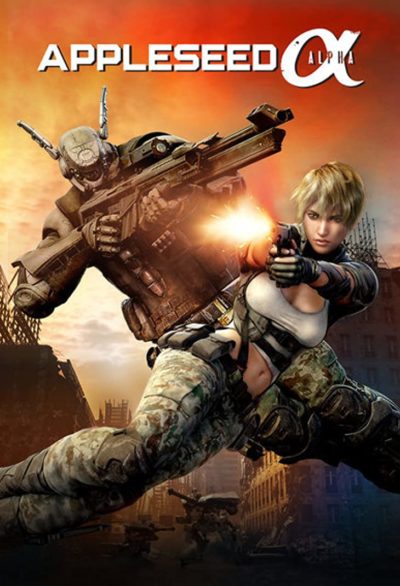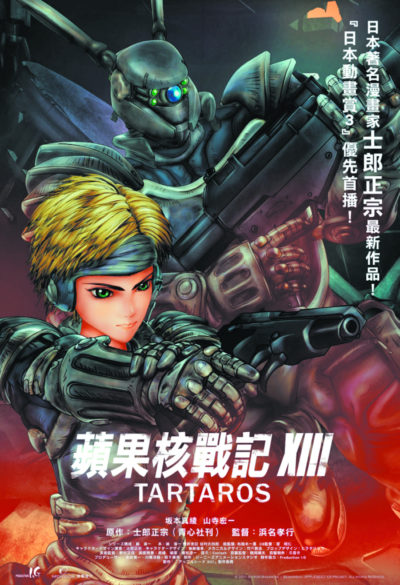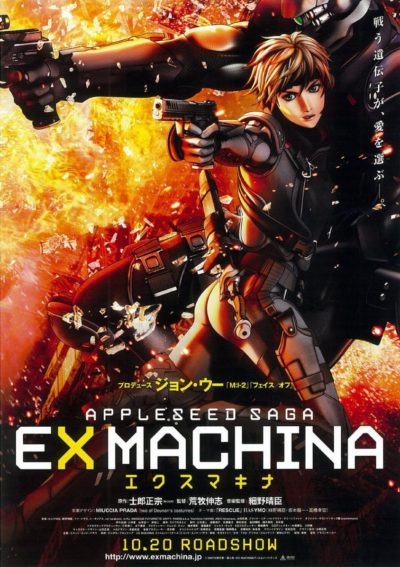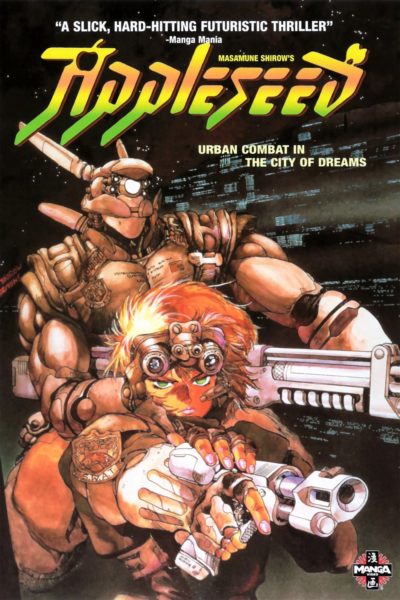★★★
“Something mighty morphing in my pants.”
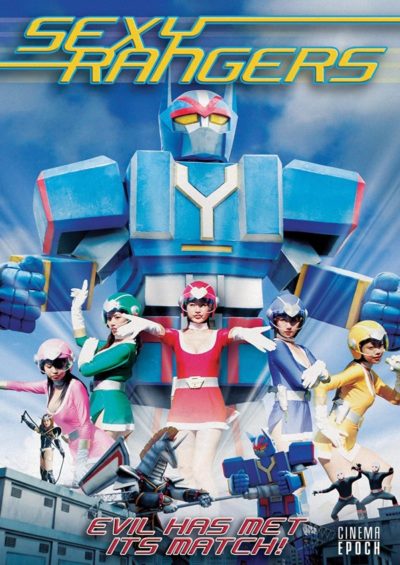 Because what the world really needs, is an all-girl version of Power Rangers, tasting very strongly of cheesecake. That’s what you have here, in a world where women’s breasts are a source of energy. Okay, later on we discover it’s actually male appreciation of women’s breasts that is the true source of power, but let’s not quibble over details. This “pai” energy has been used by Professer Saionji to create a team of five, color co-ordinated heroines, who use their abilities to fight off monsters from other dimensions, sent here under the control of Queen Amorous (Yamada). These “Pai Rangers” are firmly referred to in the subtitles as “Sexy Rangers”, presumably to avoid a cease-and-deist from Saban. Their leader is the Red Ranger, Momiji (Tejima), apparently because her breasts are the biggest. Um, the biggest source of pai energy, I mean. Occasionally, she and her team need to recharge, which is done by flouncing about the beach in bikinis, exploiting the male gaze.
Because what the world really needs, is an all-girl version of Power Rangers, tasting very strongly of cheesecake. That’s what you have here, in a world where women’s breasts are a source of energy. Okay, later on we discover it’s actually male appreciation of women’s breasts that is the true source of power, but let’s not quibble over details. This “pai” energy has been used by Professer Saionji to create a team of five, color co-ordinated heroines, who use their abilities to fight off monsters from other dimensions, sent here under the control of Queen Amorous (Yamada). These “Pai Rangers” are firmly referred to in the subtitles as “Sexy Rangers”, presumably to avoid a cease-and-deist from Saban. Their leader is the Red Ranger, Momiji (Tejima), apparently because her breasts are the biggest. Um, the biggest source of pai energy, I mean. Occasionally, she and her team need to recharge, which is done by flouncing about the beach in bikinis, exploiting the male gaze.
It is, of course, utterly ridiculous and possesses all the production value you would expect, given a budget estimated on the IMDb at 50,000 Yen. Adjusting for inflation and converting to dollars, that’s $480 in 2021 terms. I double-checked no zeroes had gone missing in the process. It does appear largely to have been filmed in car-parks. But I have to say, it’s bright, colourful and energetic, and all stupidity is absolutely in line with the show which is its inspiration. Witness the two main monsters: Unikong, which is an armoured, lance-wielding unicorn, and Camerang, a humanoid camera. Because, why not? Anyway, Queen Amorous kidnaps the Professor’s daughter, ransoming her for a device which can extract the pai energy from the Rangers, weakening them so that her monsters and their (literally faceless) minions can overpower them and take control of Earth. Meanwhile, she’s working at the order of King Muscle, a giant eyeball – again, because why not?
The fight scenes are more or less complete garbage, barely even reaching “I kick in your general direction, you vaguely swing in my postal code” level. But what would you expect when you have five bikini models going up against a giant camera? They clearly are not the point; the director’s choice of camera angles and focal points makes that abundantly clear. Yet it helps that everyone takes it dead seriously; maybe it’s just me, but the hottest woman here is likely evil Queen Amorous, the one who shows the least amount of skin. Not that there’s every anything more than copious cleavage, I should point out. Though I can’t think of many films which feel more like a porn flick, yet fail to contain any actual nudity. As such, the combination of wholesome values (loyalty to friends and family, perseverance, etc.) and fan service is quite conflicting. I would still watch this on a weekly basis. Hell, considering the cost, I’d be prepared to fund a sequel.
Dir: Shinji Nishikawa
Star: Yû Tejima, Yuzuki Aikawa, Jun Suzuki, Yoko Yamada
a.k.a. Big Boob Squad: Sexy Rangers





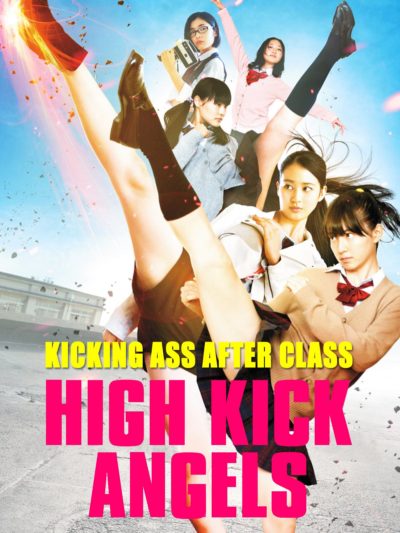
 This was a rather pleasant surprise. I was expecting a pretty naff entity, more interested in titillation than anything else. I actually got a thoroughly entertaining 90 minutes, with considerably better martial arts than I predicted. Sure, the story – as the tag-line above suggests – is hardly original, and the performances are… well, let’s say variable, and leave it at that. Yet this overcomes its limitations with heart and energy. It takes place in a recently abandoned school where a film club have gained permission to make a movie starring Sakura (Miyahara) and Maki (Aono). Shooting of their zombie epic is rudely interrupted by the arrival of a gang of miscreants, led by J-Rose (Morishita). They’re looking for five USB drives hidden in the school, that combine to give access to money embezzled by a previous school head. They lock down the establishment, and won’t let five schoolgirls get in the way.
This was a rather pleasant surprise. I was expecting a pretty naff entity, more interested in titillation than anything else. I actually got a thoroughly entertaining 90 minutes, with considerably better martial arts than I predicted. Sure, the story – as the tag-line above suggests – is hardly original, and the performances are… well, let’s say variable, and leave it at that. Yet this overcomes its limitations with heart and energy. It takes place in a recently abandoned school where a film club have gained permission to make a movie starring Sakura (Miyahara) and Maki (Aono). Shooting of their zombie epic is rudely interrupted by the arrival of a gang of miscreants, led by J-Rose (Morishita). They’re looking for five USB drives hidden in the school, that combine to give access to money embezzled by a previous school head. They lock down the establishment, and won’t let five schoolgirls get in the way. Poor teenage girl Mako (Ogura) is having a pretty crappy time of it. Her parents are feuding over money troubles, she’s getting bullied at school, and then, her father ends up arrested for fraud. But, just when things are their lowest, she gets a paper-cut. For reasons that are never
Poor teenage girl Mako (Ogura) is having a pretty crappy time of it. Her parents are feuding over money troubles, she’s getting bullied at school, and then, her father ends up arrested for fraud. But, just when things are their lowest, she gets a paper-cut. For reasons that are never  Perhaps I just expected more from the combination of martial artist Takeda (High-Kick Girl, Karate Girl) and Iguchi (Mutant Girls Squad, The Machine Girl). While this has its moments, it falls well short of the best works of either star or director, delivering neither the action nor the insanity, of which I know both are capable. The set-up is fine. Takeda plays Keiko, the daughter of a sushi master, who leaves home after being told by her father she’ll never amount to anything. She gets a job working in a Japanese hot springs inn, and isn’t much good at that either.
Perhaps I just expected more from the combination of martial artist Takeda (High-Kick Girl, Karate Girl) and Iguchi (Mutant Girls Squad, The Machine Girl). While this has its moments, it falls well short of the best works of either star or director, delivering neither the action nor the insanity, of which I know both are capable. The set-up is fine. Takeda plays Keiko, the daughter of a sushi master, who leaves home after being told by her father she’ll never amount to anything. She gets a job working in a Japanese hot springs inn, and isn’t much good at that either.
